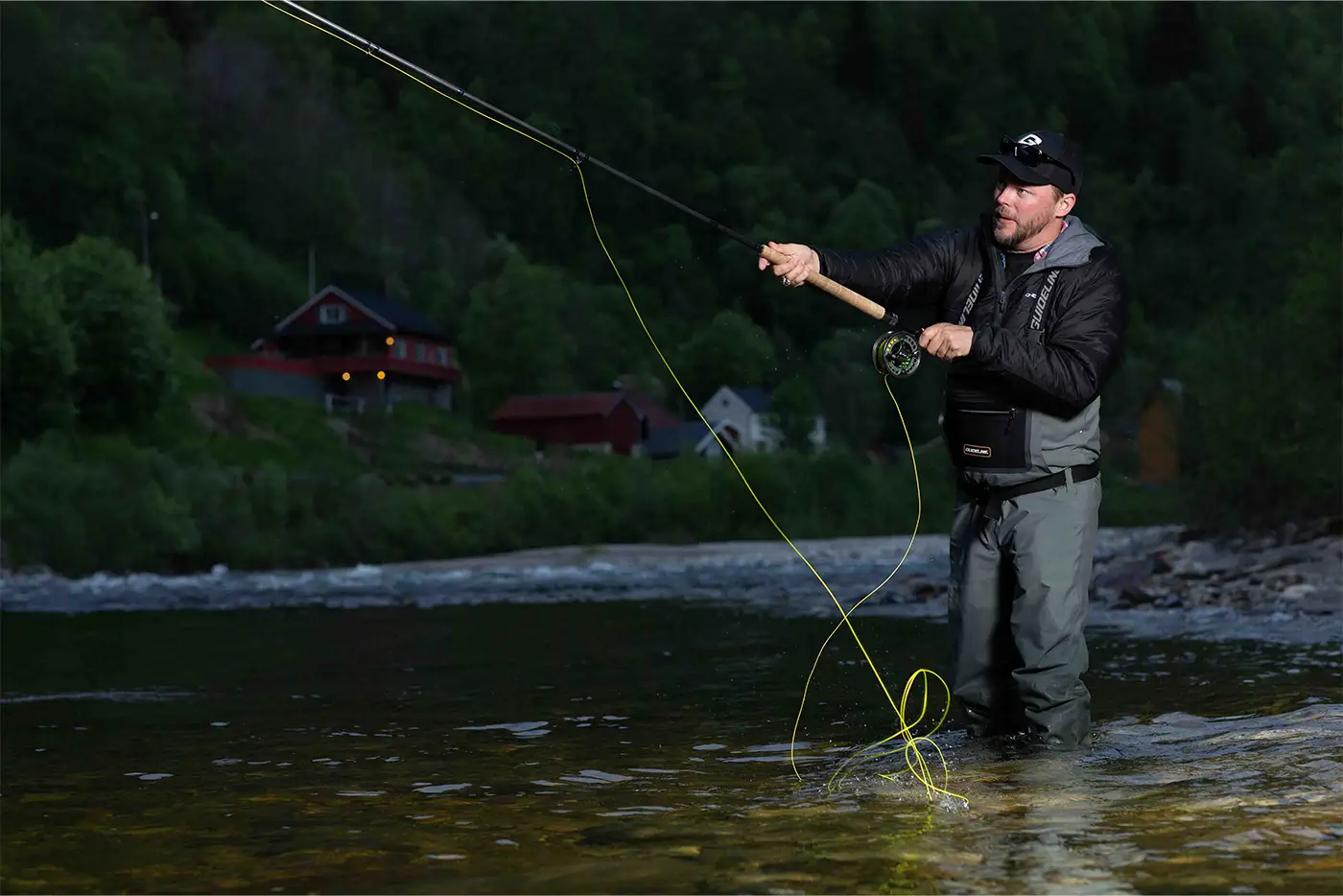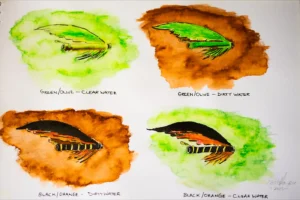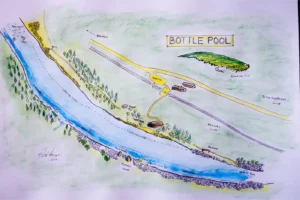What is the best all round fly line?
I get asked a lot about fly lines and the question is always the same: ‘Which line should I use?’ My usual reply is ‘well, it depends on the height of the river and the pool you are fishing’ but in truth we all know that most anglers like to use just one line, two at most.
Let’s get the basics out of the way first. For most purposes a #9/10 rated rod is ideal. In the Spring a #10/11 can be useful when fishing sinking lines. In the later part of the season we often use #8/9 rod set-ups for improved presentation. Of the three line ratings, the #9/10 is the most versatile and I fish with a pair of 14 foot rods rated at #9/10.
The line that I see our guests at Winsnes fishing with most often is a floating line with a sinking tip and if there is such a thing as a universal line which will catch fish in most conditions it is the Float/Hover/Intermediate. By changing flies and using plasic, aluminium, cone head and brass tube flies you can vary the deth a bit and either get the fly to fish in the surface film or perhaps a meter down or so with the heavier flies.
Most fly lines these days are multi-tip, maing it possible to keep the same line and simply use different tips with varying sinking densities. By swapping tips, it’s possible to fish from literally in the surface film down to a few meters, especially if a fast sinking tip is used with a weighted fly.
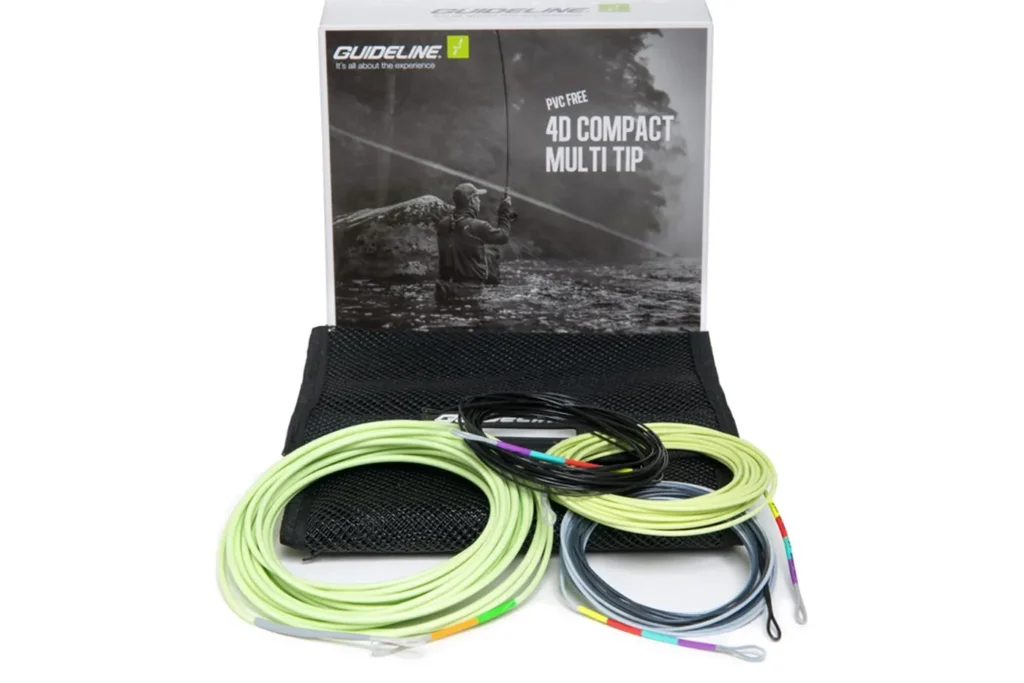
Most salmon fly lines made these days are duo-section with a belly and a tip that that can be joined together, enabling the angler to interchange tips and bellies of different sinking densities.
What about Full Floating and Sinking Lines?
It is always worth bringing a full floating line even if it is of the modern type and made in two sections. I have used the Guideline 4D Floating line and despite the fact that is just one, not four densities, it is a nice line to cast and it presents nicely with a delicate turnover. Floating lines are useful for fishing in the shallower sections of the river and allow the angler to mend the line to slow it down or speed it up. No other line delivers the same control as a full floater. The ideal time to use them is when presenting flies on or near the surface, in shallow water and when presenting dressed or delicate flies in low water.
Sinking lines are used frequently by our regular veterans but not so much by newcomers and more occasional fishers. There is an inherent psychological problem with sinking lines: one cannot help worrying about getting stuck on the bottom and having to heave the line up to the top after every cast.The days when sinking lines were difficult to fish with are long behind us, however. Modern sinking lines fish much better, are easier to pick off and fetch up out of the water at the end of the fly drift.
Sinking lines do not have to fish deep, there are slow sinking and medium sinkning lines too and these are the ones that I favour most on Gaula. Getting beneath the surface turbulence is essential and there are times when a slow or medium sinker will out fish the standard floating line with a sinking tip that most people use. The benefit of a sinking line as opposed to a sinking tip is that the whole line cuts beneath the surface, stabilising the fly and allowing it to ‘dig in’ deeper.
While floating lines will impart some speed from the surface current, when the flow is strong and you need to stabilise the fly, a sinking line is the answer.
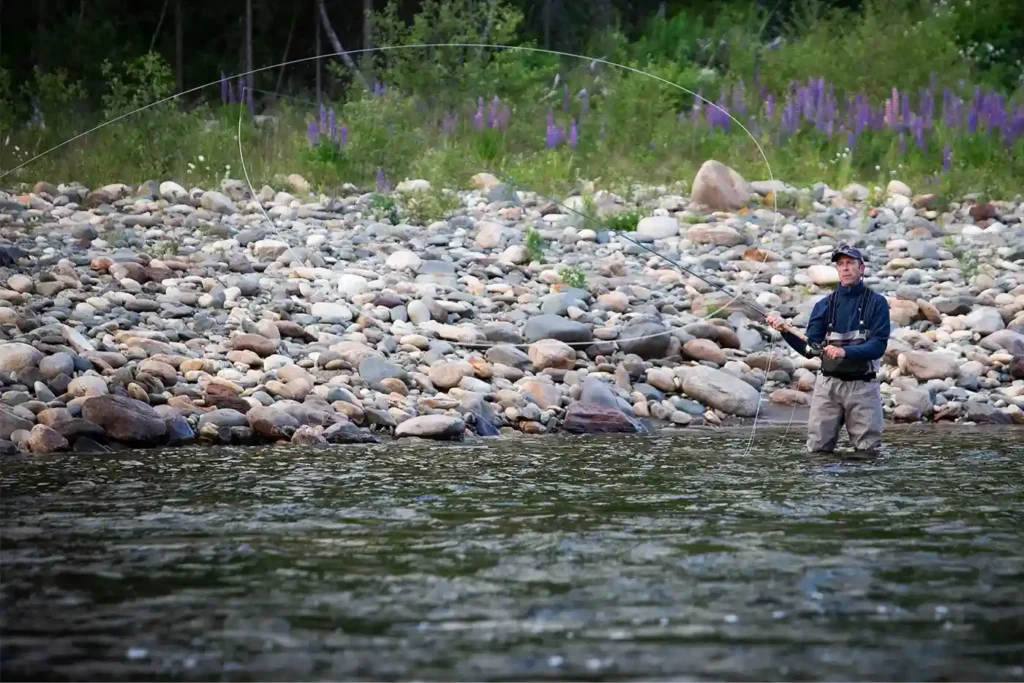
Lifting the line off used to be a nightmare with sinking lines but nowadays they pick off cleanly and easy thanks to the combination of different sinking densities in the same line.
3D and 4D Lines Explained
I use the Guideline 3D and 4D line systems and these are the lines that I sell in our shop. The main reason is that these lines fish beautifully, offering an endless combination of options to present the fly at a wide range of depths. Many people get confused by the multiple density thing but its really fairly simple. The classic floating line when combined with a sinking tip is a double density line. It has both a floating and a sinking component. A triple density line combines three densities in one line. A classic example is Float/Sink 2 /Sink4 or Float/Hover/Intermediate. In the latter case, the back section is a floating line, the mid section sinks to ‘hover’ level and the tip section goes slightly deeper still to ‘Intermediate.’
4D Lines have four densities. The bellies and tips can be brought separately or in bundles.
Each section has two densities, for example Float/Sink 3. This means that the very back of the line floats, the belly is a medium sink and this gives the back section 2 densities.
Combined with a two-density tip section, for example sink4/sink6, our line would now begin life as a floater at the back and by the time we reach the front it is a fast sinker. Float/sink3/sink4/sink6
Some belly sections are sinking and I prefer these most of the time. My favourite lines are a combination of single, double, treble and quadruple density!

The compact Multi-tip lines are slightly shorter than the classic ‘Scandi’ cut but they are very useful when fishing in tight cover or off the bank.
My Favourite Lines
I have already stated that I like multi-density lines most of the time and that I often fish a slow or medium sinker to stabilise the fly and anchor it slightly. I should also say that I favour the shooting head lines known as ‘Scandi’ Lines. These lines are typically 11 to 13 meters long, the shorter ones such as the Compact multi-Tip being ideally suited to fishing off the bank and in tight spots. Where reasonable casting space is involved, a longer head around 12 to 13 meters in length is preferred.
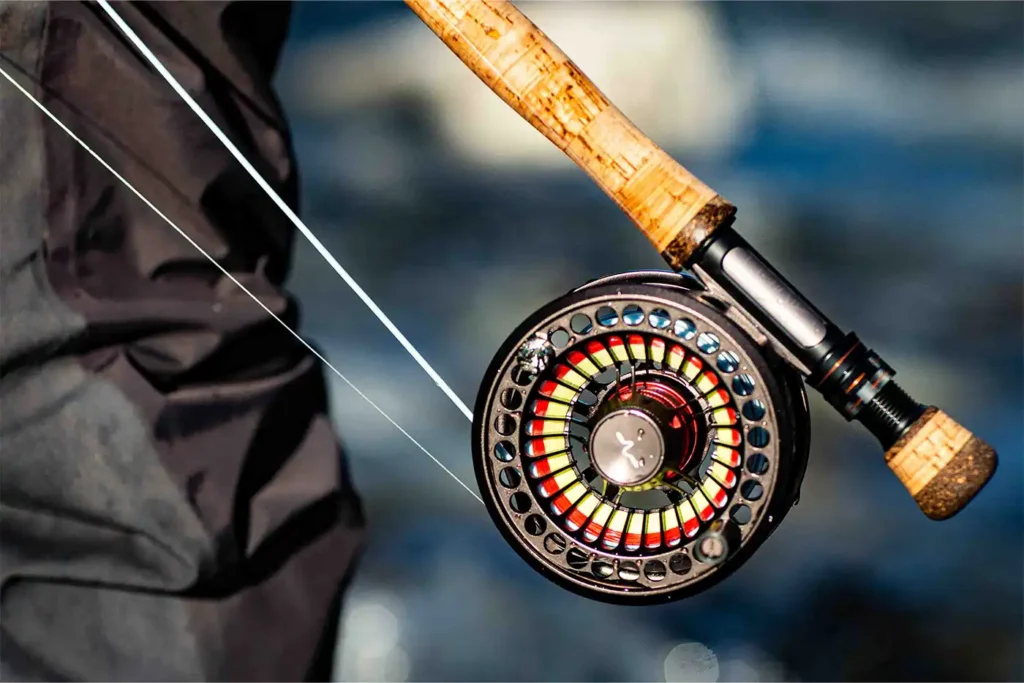
Make sure that your reel is packed with backing but leave enough room for the shooting line and backing. correctly loaded the fly line should fill the spool nicely.
Most of the time I use slow to medium sinking lines, one of my favourites from the old days being the Guideline Hover/Intermediate. There are a few of these lines still knocking around but they are hard to get now which is a shame because they are brilliant.
The Guideline Triple Density Float/Hover/Intermediate is generally acknowledged as a classic line and it is the one that I most frequently recommend to anglers who can’t be fussed to keep changing lines or tips.
Next we have the Intermediate/Sink 1, a line that I believe is still available. Mnt green in colour, it is a slow sinker and I use this line a lot!
So too the intermediate, Sink/Sink2 by Guideline. This isn’t a proper triple density line because the intermediate part is so short. The s1/s2 sinking rate is making this line a slow to medium sinker.
Hover/Intermediate/Sink 3 – this is another classic Gaula line. A medium sinker, it is very good around the heads of pools and in strong currents.
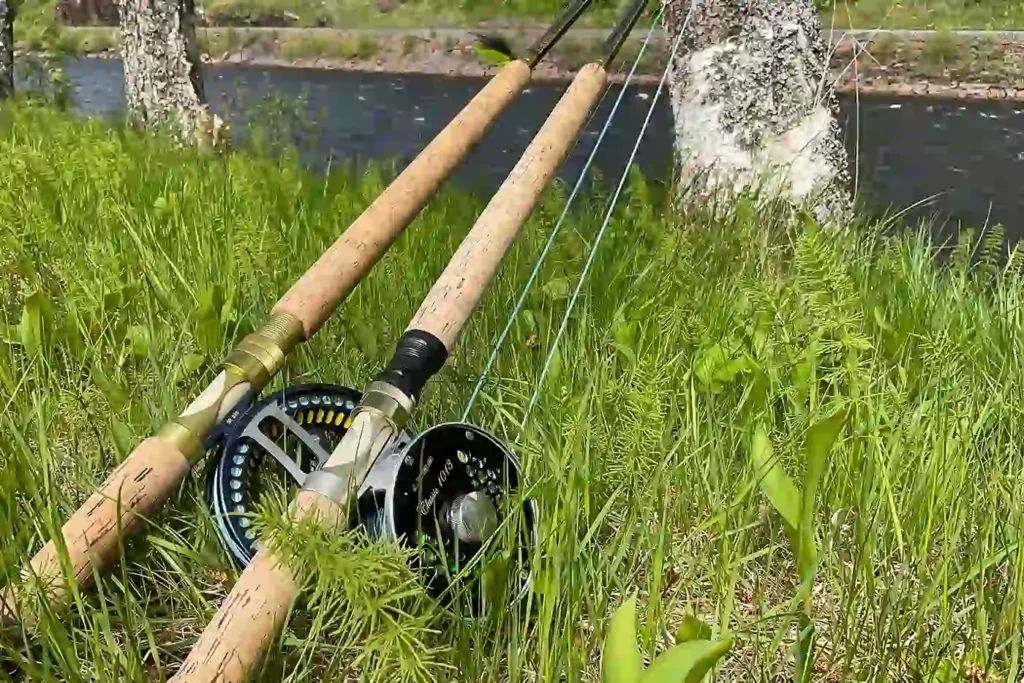
I prefer two rods when I fish so that I can try the pool with different lines and to fish specific parts of the pool with different approaches.
Other Useful Lines
Skagit lines are much shorter than the ‘Scandi’ lies I prefer. These lines are much shorter, between 6 and 8 meters in length and they cannot be cast spey style. Rather they need to be dumped onto the water in a heap with a ‘SnapT’ cast. When you make the cast, the concentrated weight of the line helps it fly. This is different to longer lines which rely on water tension and ‘surface stick’ to lod the rod and propel the line. I don’t like Skagit lines because I find them clumsy and noisy but they are extremely useful for newcomers and people that struggle with the single spey cast. Many is the occasion when I have seen these lines catch a fish for an angler struggling to spey cast.
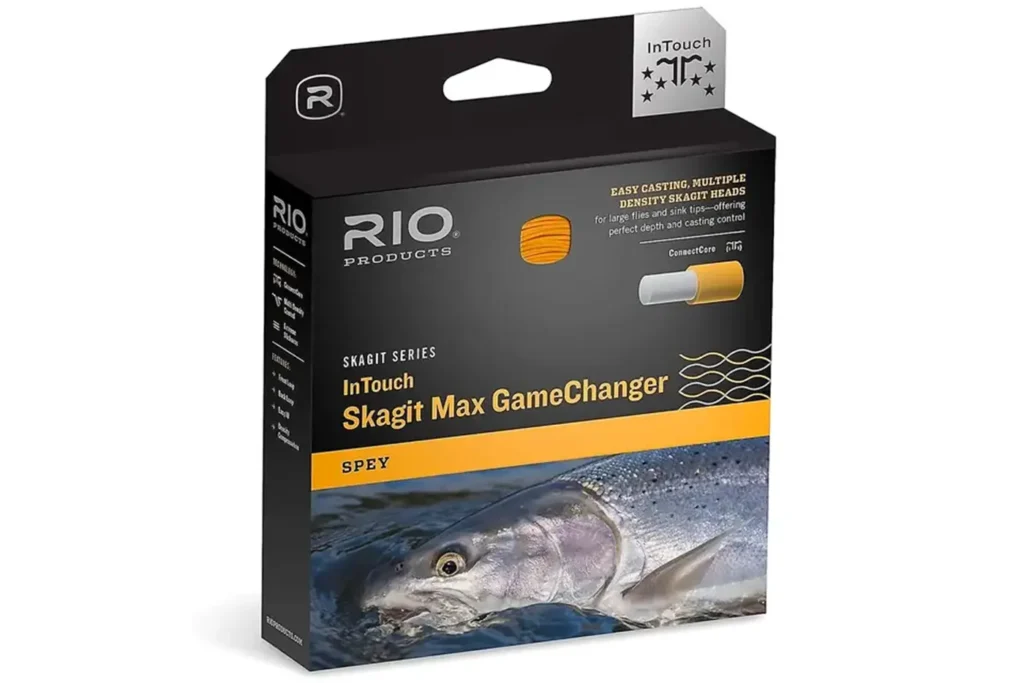
Skagit Lines are short and brutal but they have their devotees and their uses…
Ultra-light and Switch lines
We don’t use the modern generation of ultra-light switch rods so much because there are issues if you hook a really big fish with controlling it on such a flimsy outfit. Nonetheless, during periods of low water, single-hand and switch style rods can be useful when presenting small flies to wary fish. I have tried the 7/8 weight version of the Guideline ULS system but it is pushing it a bit on Gaula. Theproblem is the lifting power, or lack of it, in a rod so delicate.
Single-hand rods catch quite a few fish. I like an eight or a nine weight rod, nine feet long and with a full floating line lore often than not. The fly line should have an aggressive taper of the type used for presenting streamer flies to punch the fly out and turn over the heavier, weighted flies.
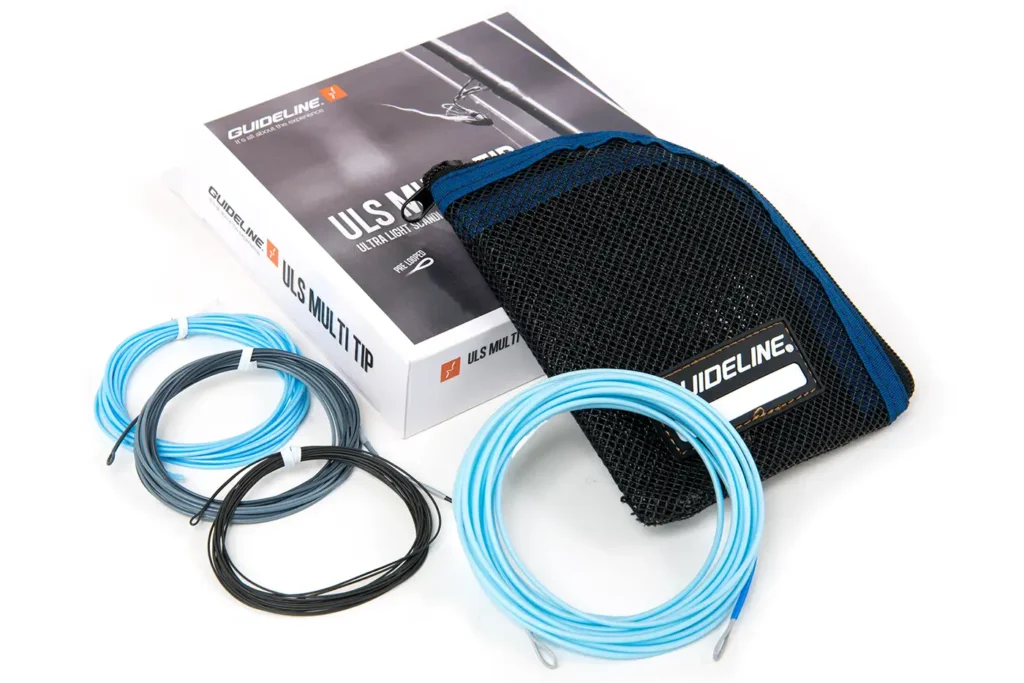
The Guideline ULS System works very well for spey casting single hand style with lighter rods
My Dream Line
Well, I started this piece by saying that there is no such thing as a perfect fly line but that there are some that are close. My hope is that Guideline will make a new Belly and tip combination in their 4D system. I have already mentioned that I prefer to use slow sinking lines to floating lines with a short sinking tip. Sinking lines get below the surface and at times, as the river loses its flow in low water, the surface current breaks down into a series of awkward wrinkles and any floating part of your fly line will be pushed into slack curves and wrinkles. The secret is to get the back part of the line below the surface. So here it is, my dream 4D Line: Light Float/Hover/Intermediate/Fast Intermediate. Note that ‘light float’ sinks very, very slowly and gets the back of the line just below the surface film.
